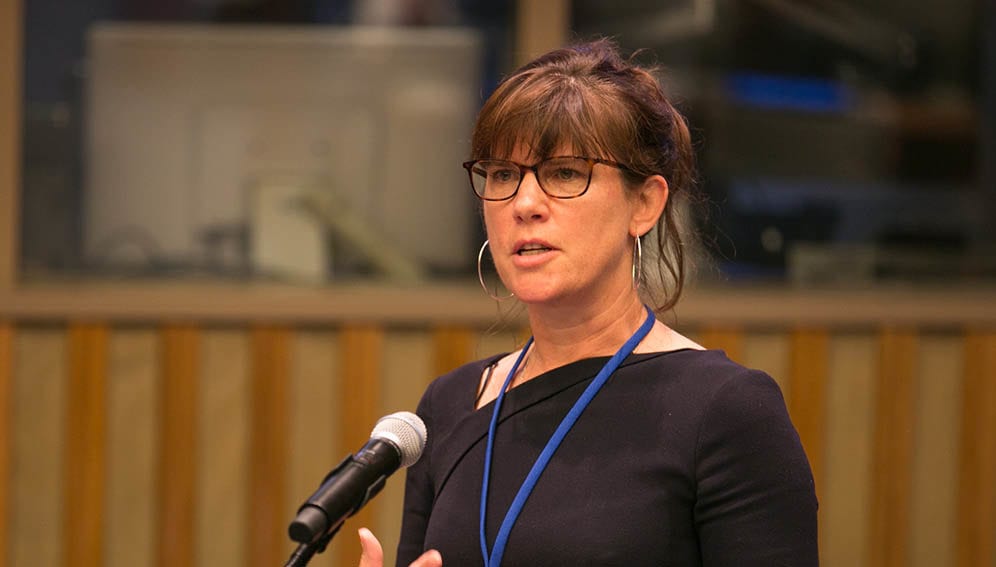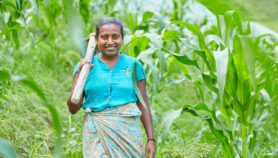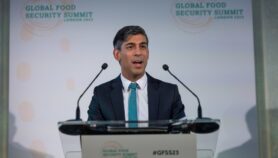By: Inga Vesper
Send to a friend
The details you provide on this page will not be used to send unsolicited email, and will not be sold to a 3rd party. See privacy policy.
The 50 x 2030 initiative, launched this week at the UN General Assembly in New York City, aims to pool together farming data from around the world in order to help governments make better decisions towards ending hunger. It will select 50 countries — 10 each in Asia and Latin America, and 30 in Africa — to receive support in gathering, storing and using the data.
The project is expected to cost around US$500 million until 2030, and is funded by the governments of the United States, Australia and Germany, plus the Bill & Melinda Gates Foundation and several UN bodies.
But ensuring the data gathered is of sufficient quality remains a problem, says Claire Melamed, CEO of the Global Partnership for Sustainable Development Data, which oversees the initiative. She spoke to SciDev.Net about the role of the initiative in encouraging governments to make better policy, as well as the gender aspect of agriculture.
Why are you focusing on agricultural data?
Agriculture sits in the middle of many countries’ plans to achieve the Sustainable Development Goals. But often, these countries do not have good systems for collecting data on this [sector]. Sometimes there is a big physical gap between data collection centres, or the systems in place are insufficient. As a result, governments may not have a sense of how many farmers there are in their countries, what they are producing, and under what circumstances.
This is getting more important as we see the impact of climate change. Agricultural conditions are changing rapidly in many parts of the world, and farmers and governments are struggling to keep up. So, regarding the weak evidence on which much policy is made, it’s time to build up the information to help make the right decisions.
How will the 50 x 2030 initiative work?
The initiative is based on the expansion of existing survey programmes. We don’t want to create something brand-new, because there are lots of tools out there already to collect data for agriculture. We are mainly using two programmes: the Integrated Surveys on Agriculture, part of the World Bank’s Living Standards and Measurement Study, and the AGRISurvey from the UN Food and Agriculture Organization.
Doing surveys is expensive and many governments are constrained in the resources they have for this. In this initiative, data will be collected by governments, but we are providing resources to scale that up and put it on more sustainable footing.
What kind of criteria will you impose to ensure the data will be relevant?
We will only support tried and tested programmes that come with a tested methodology. The survey questions have to be standardised over time, and the surveys themselves have to have been used for policymaking for many years. We’ll also look at whether the sample size is big enough to disaggregate data into districts or particular population types. We need surveys that can provide a foundation for real-time data initiatives, small area information and other things that provide extra granularity. But it all has to be built on a foundation of rigorous, methodologically sound survey data. That’s what this is all about.
How will you select the participating countries?
They have to be places where the government has a commitment to improving data. They have to invest some money themselves, as well as using resources from donors. That’s important for accountability and to make sure the data will actually be used and embedded in government systems.
Of course, they also have to be countries where agriculture is a key issue for development. There have to be institutional incentives for people to actually use the data as part of policymaking. We don’t just want to take a bunch of data, throw it on a platform and walk away.
Could you give an example of how better data can change policies?
My favourite example is about data on gender in farming. For a long time, policymakers had a picture of farmers as either a family unit doing subsistence farming or a business where the farmer was a man. But then, extensive data collection showed that the picture is much more complicated than that. There are many women who farm or own a cow. Plus, in many countries there are complex gender divisions. Just think about differences in labour, land ownership or the farming of different crops.
So, you think better data could help women?
Yes. We always have to look at agriculture through the lens of gender. With better data systems, we get new ways of seeing the world. Data allows us to ask whether men and women are making decisions in different ways because their incentives and responsibilities are different. When you design programmes, better data will give you insights into the gender-different ways men and women will be affected. If the right decisions are made, this is going to help women and will ultimately deliver better policy and better outcomes.
This Q&A was edited for brevity and clarity.














